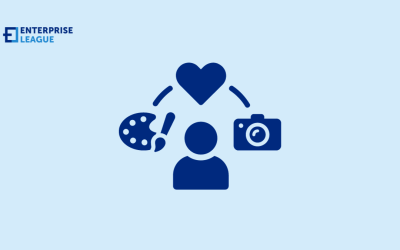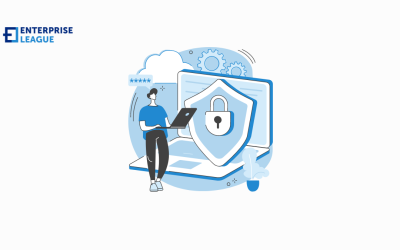Customer data protection is one of the most important determinants of business growth. Although online services provide fast, affordable, and convenient solutions, their rising adoption encourages data breaches. This illegal industry is lucrative to cybercriminals, with experts expecting the cost to keep rising.
High-profile attacks against giants such as Acer, Microsoft, and Bombardier show no company is immune to hacking. This worrying trend calls for constant vigilance and commitment to customer data protection in compliance with the highest cybersecurity standards. The following tips will help you achieve these objectives:
Have an explicit and honest privacy policy
Trust determines how comfortably consumers interact with your brand. They have more faith in healthcare providers than in social media apps. That’s because the former asks for information most relevant to your physical and mental wellbeing, while the latter collects more than they need. In addition to harming your reputation, deceptive data policies expose you to potential legal disputes.
Embrace data encryption
Encryption sounds like a no-brainer, but most businesses don’t embrace it. Network access points are always vulnerable to data breaches. Apart from firewalls, password management tools provide affordable and productive solutions.
They improve data security by complicating stored passwords, making them unreadable to unauthorized personnel. The best encryption tools protect data in transit and at rest.
Limit data access
Although efficient data collection and analysis are beneficial, you should only give access to employees who need it. For instance, your marketing department utilizes different information from the finance section. This limitation reduces the likelihood of internal breaches.
Similarly, collect data that are crucial to your organization’s core business. It makes more sense to allow third-party vendors to process credit card transactions rather than handle them in-house.
Implement minimum cybersecurity standards
Minimum security standards ensure consistency across the board. Customer information is better protected if your SaaS tools comply with SOC 2 or ISO 27001 requirements. SOC 2 follows five essential principles: privacy, security, confidentiality, availability, and processing integrity. ISO-based compliance requires continuous evaluation, refining, and augmentation. These solutions make it easier to scale service provision to thousands or even millions of users. According to DataCo, when it comes to earning the trust of customers, it is a good idea to pursue an ISO 27001 certificate. Having this in place will give you a blueprint for what it takes to protect private data as comprehensively as possible, while also enabling you to show clear evidence of your commitment to security to existing customers and prospects alike.
Prompt system updates
Most companies avoid regular software updates for fear of affecting the customer experience. However, cybercriminals are always looking for vulnerabilities. Every minute you delay this crucial step could lead to a costly data breach. Although some updates are expensive and time-consuming, their long-term benefits are worth the minor inconvenience.
A comprehensive guide to secure data collection
Collecting data over insecure connections also increases the likelihood of cybercriminals intercepting vital transactions. HTTPS protection prevents it through the TLS protocol, which offers three crucial security layers:
- Encryption prevents unwanted eavesdropping, monitoring, and access to information.
- Data integrity prevents unlicensed modification and corruption during transfer.
- Authentication ensures your customers are interacting with the correct website. This layer protects data against man-in-the-middle interceptions.
With several data collection tools available, the ideal choice depends on your business niche, budget, and target audience, among other factors. Commonly used business solutions include Google Analytics, Facebook Audience Insights, and SurveyMonkey.
The Google Tag Manager (GTM) allows you to gather visitor details by adding JavaScript code snippets to your website. It’s a free tracking tool compatible with Google Analytics, Facebook Ads, and other online advertising options. The snippets, also known as tags, eliminate the complications of manually tagging each platform.
How data collection helps measure business performance
Efficient data collection techniques help you identify the best key performance indicators for your business. KPIs are quantifiable measurements that determine an organization’s long-term strategic, operational, and financial achievements. Although they vary between industries, there are five universally applicable KPIs: customer satisfaction, profit margin, revenue growth, client retention rate, and revenue per client.
To avoid confusion, choose a few measures for each business objective and assign each KPI to particular individuals. Additionally, set a monthly, quarterly, or other suitable frequency to ensure continual monitoring and reporting. Performance management software allows you to create custom KPI dashboards for different audiences, such as departments and company executives.
Why do you need strategic risk management?
- Defining your business objectives.
- Creating KPIs to gauge results.
- Identifying risks that can affect performance.
- Establishing key risk indicators (KRIs) and your tolerance for these threats.
- Monitoring and reporting continuously to take advantage of unexpected opportunities.
As with KPIs, you can use premium software solutions such as Reciprocity ZenRisk to unify cybersecurity compliance and risk. This platform offers high-level visibility to help you avoid threats and receive actionable insights.
Important data regulations
Effective data collection methods and tools comply with various state, federal, and international regulations on security and privacy. One of the most comprehensive regulations is HIPAA compliance, which pertains to protected health information (PHI).
HIPAA-compliant solutions collect up to 18 different data items. They include names, email, phone numbers, geographical identifiers, social security numbers, vehicle details, biometrics, IP addresses, account numbers, and photographs.
The Gramm-Leach-Bliley Act (GLBA) is another law that outlines how financial service providers should handle sensitive data. Its essential requirements include providing clear privacy notices, formulating an extensive security plan, and working with GLBA-compliant contractors.
At the state level, the California Consumer Privacy Act (CCPA) stands out for its commitment to protecting consumer data privacy. Requirements include providing opt-out options, updating privacy policies, using CCPA-compliant tools, and having a disaster response plan.
International data protection laws include Europe’s General Data Protection Regulation (GDPR) and Strong Consumer Authentication (SCA).
More must-read stories from Enterprise League:
- How successful businesses can give back to the community.
- Learn about what to do when a client doesn’t pay.
-
Kick start your business by choosing the best business location based on these 9 factors.
- Best marketing tools for startups that are looking to grow.
- Find out which are the most unpredictable costs of doing business.
Related Articles
How to turn your hobby into a business in 2024
How long have you been dreaming to turn a hobby into a business and swim in cash? Stop dreaming, read our article and take action.
Home office security: 10 cybersecurity tips for remote workers
Working from home has become a reality and there are new challenges associated with remote work and maintaining the security of sensitive information.
6 supply chain challenges and how to solve them
When your business works with physical products it won’t be long until certain supply chain challenges arise. Knowing how to deal with these supply chain issues is crucial.
How to turn your hobby into a business in 2024
How long have you been dreaming to turn a hobby into a business and swim in cash? Stop dreaming, read our article and take action.
Home office security: 10 cybersecurity tips for remote workers
Working from home has become a reality and there are new challenges associated with remote work and maintaining the security of sensitive information.





